High Speed Rail is at the core of Alstom. A pioneer in countries like France, Italy, UK, Spain, South Korea, Finland or Poland, it has the largest fleet of high speed trains in service in the world. More than 1,200 trains with Alstom technology operate daily in 20 countries and across 16 borders. After 34 years of commercial service and over 5.6 billion kilometers, around 3.5bn passengers have travelled in Alstom trains all over the world, including China, Russia and the US.
After building the Eurostar fleet, and building and maintaining the Virgin Pendolino trains, the company is now monitoring developments and engaging with the UK regarding High Speed 2.
Alstom doesn’t just design, build and maintain trains. As well as the vehicles, it can offer a complete railway solution for HS2 including design, procurement, manufacturing, installation, testing and commissioning of the complete railway system consisting of signalling, telecommunications, track, electrification (OLE and power supply), depots and tunnel electromechanical equipment, and the maintenance of the complete system.
Alstom is also one of the world leaders in innovation, and through collaboration with HS2 and partners it is confident it can find a solution to suit the UK’s needs. It can draw on its four decades of global experience and its privileged position in the market to put forward proposals and ideas that could help shape the future of the HS network in Britain.
Alstom HS2 Director Henrik Anderberg believes the company will be able to build on this experience. He tells RAIL: “We are a very British company and we know this market. We understand the UK’s special circumstances and we have the global experience to make it happen through innovation and collaboration with other first class companies.”
While there is clearly a desire to innovate and use new technology, Anderberg believes that existing ideas can also be implemented, building on expertise already in use here in Britain. “We are providing a lot of things with Crossrail - OLE, power supply, track and Electrical and Mechanical (E&M) installations. This project has given us the opportunity to enhance our network of local supplier/ contractors, who can support us with their expertise, which will be needed for HS2.”
But what about the problem of technology moving on while HS2 is being built? Says Anderberg: “It is the same as buying a mobile phone or television - the technology will move on no matter when you buy it.”
Alstom has been working on a new design of slab track to make the system as future-proof as possible. HS2 Ltd’s Technical Director Andrew McNaughton, speaking at the National Rail Conference (NRC) in Leeds on November 5, said that the HS2 track must be able to withstand 60 million tonnes of wear per year. At Alstom, they are up for the challenge. Anderberg says: “We have designed a new slab track called NBT. A lot of work has gone into the theoretical calculations. To test the design we have built 1km of double-track in France, and we also have a test section in Russia.
“Our product would have the 100-year lifespan requested by HS2. Our goal is for a (nearly) zero maintenance, inspection-only slab track system. Inspection is easier and less time-consuming. It means the railway does not need to close at night, allowing, for example, freight trains to run.
“We are now in the process of engaging with different verification bodies in order to be able to have a fully homologated product. Tests are ongoing in Russia, where 200 million tonnes have been done, so far and in two years we should have reached 600 million tonnes.”
This long lifespan concrete slab track system offers high availability and a high construction rate. It has a smaller footprint than ballasted track and is optimised for mixed traffic. The cost of this system versus traditional ballasted track is very favourable when projected over a period of 100 years, thanks to improved operation and lower maintenance costs for the course of its lifespan.
Alstom has developed specialist machinery to install the track. “What differentiates our technology from other slab track solutions is the speed at which the track can be laid. Alstom has developed a specific set of laser-guided machinery capable of simultaneously casting the track slab and inserting the fasteners at speeds of up to 500m a day. The technology is based on the existing and very successful Appitrack machine, used recently in Nottingham for the tramway project.
“With respect to electrification, we have already launched R&D programs that will enable us to homologate our catenary components to the design speeds required by HS2. Our expertise in this area is particularly strong; we have had presence in the very high speed (VHS) electrification of Spain, with more than 550km installed, Korea, with 477km, 200km of VHS in China, more than 700km in Italy on both VHS and HS, not forgetting the 80km performed in the UK as part of HS1.”
Complementing this international experience, Alstom is also working on electrification in the UK, one of several examples being the Edinburgh to Glasgow main line, including OLE and 25kV power supply (traction and feeder systems). This 150km line is under construction and will be in service by the end of 2016. “Knowing the local circumstances and how to electrify in the UK, combined with our extensive knowledge from international projects, will position us well for HS2”, says Anderberg.
Signalling on HS2 will be the new European systems, and this is where Alstom can, again, rely on its vast experience. When it comes to European Railway Traffic Management Systems (ERTMS) across the continent, Alstom’s ERTMS level 2 systems are in operation on more kilometres of track than all other suppliers put together.
To achieve HS2’s target of 18 trains per hour, Anderberg says that detailed plans and simulations are needed to understand how to design the ERTMS system to handle this ambitious train frequency. While he admits that it presents a challenge, he says that the standards and any requirements for further development have been discussed, and that this is where Alstom will excel. “We have been working on this for 15 years. We built the first ERTMS very high-speed line (Rome-Naples) in 2005, celebrating ten years of successful operation now in December. We also built the first ERTMS cross-border line, and we should be the first choice for this. We have a proven and tested strategy. HS2 is due to start in 2026 and we will be ready. We are not just the first to the market - we also have, by far, the most operational experience.”
When it comes to the trains, Alstom’s high-speed trains are, of course, already established in the UK - with 31 Class 373 Eurostar trains on HS1 and 56 Class 390 Pendolinos in traffic on the West Coast Main Line. The Pendolinos use the proven tilting mechanisms, developed from the Advanced Passenger Train, and can run at up to 125mph (200kph) on curved track. They have helped Alstom develop innovative ideas for an HS2 fleet, which will need to be created specifically for the new railway, along with a ‘classic compatible fleet’, which can run on HS2 and elsewhere on the national network.
Anderberg says: “Through our fleet we understand the UK’s particular needs and we have been enhancing the tilting train technology for the past 25 years. We have sold over 300 tilting high-speed trains around the world and all operational experience has been fed into further product development.
“Achieving good journey times on the rail network is important. Currently, the journey time from London to Glasgow, as an example, is four hours and eight minutes. The HS2 plan is to reduce that to three hours and 38 minutes when Phase 2 is complete in 2033. This can further be improved by using tilting technology and minor infrastructure updates making sub-three hours travel time possible, and as early as 2026”, says Anderberg.
“This means it would be able to compete with air travel, where a journey time of three hours or less is seen as the threshold where railway gains substantial market share over air travel.”
Faster trains are all well and good, but the services must be reliable, comfortable and pleasant. Speaking at the NRC, Anderberg spoke of recreating the experience of air travel from 40 years ago, when people were excited to arrive at the airport and travel in an aircraft. He wants to re-create this experience with HS2, but the design and quality of the train have to be right.
“One example is our unique articulated trainset design, which means each car is supported by the next car through robust articulation, and bogies are placed under the supporting end of each car. We build both articulated and non-articulated trains, but for very high speeds we prefer articulation. While the main reason is safety, it also provides smoother and better ride, less noise for passengers and wider interiors.
“Our articulation allows for fewer bogies, which implies less maintenance costs for the operator, but it also provides better aerodynamics and reduces the weight of a train, resulting in significant energy savings.
“Our articulated Euroduplex, the only double-decker in the world reaching 320kph, when fully loaded, still weighs less than an empty non-articulated single deck train.”
Alstom would also offer its HealthHub, which enables technicians to remotely monitor and predict train performance and ‘health’. It comprises various monitoring subsystems, such as Train Tracer and the innovative Train Scanner, which uses fully automated measurements via lasers, 2D and 3D cameras. Train Scanner checks items like wheels, brake pads, carbon strips and train integrity.
It is accurate to within 0.5mm, and it can complete the diagnostics of an 11-car Class 390 Pendolino in 45-90 seconds. Automated monitoring increases the inspection frequency of the trains by as much as ten times more than manual methods and is used daily by Alstom’s technicians as they perform the maintenance of the Class 390 fleet.
To develop these trains, Alstom is using its Virtual Reality Centre. This enables the company to define concepts, validate technical options, incorporate passenger feedback into the design and create more immersive training. Says Anderberg: “We use this system for determining seating layouts, and how the trains should look inside to create the very best passenger experience. It means that travellers’ needs are incorporated into the design. Plus, we can examine the technical details and work out how to optimise maintenance requirements and eliminate problems before the trains are even built.
“One of our development efforts focuses on total cost of ownership, including maintenance and energy efficiency,” he says. “We have a wide variety of train configurations to match each customer’s needs. For speeds above 300kph, three articulated architectures provide different capacities: single-deck concentrated traction (350-400 seats in typical high-speed train layout), single-deck distributed traction (450-500 seats) and double-deck concentrated traction (550-600 seats in the same conditions). Many of our customers are asking for adequate capacity and an optimisation for the whole lifecycle cost per passenger. Today we already provide lower energy consumption, but nevertheless we have set up new initiative to reduce energy consumption by at least 20% for all our trains. For the double-decker, the ambition is even greater, aiming for 30% energy savings per passenger.
Alstom has been working extensively in very high speed innovation and solutions for the last 40 years, and has been at the core of existing high-speed success stories in the UK. When it comes to HS2, Alstom is aware of the project’s high ambitions and challenging specifications, and is ready to put all of its expertise at the disposal of HS2 to help provide a high-speed railway system that will be the envy of the world.

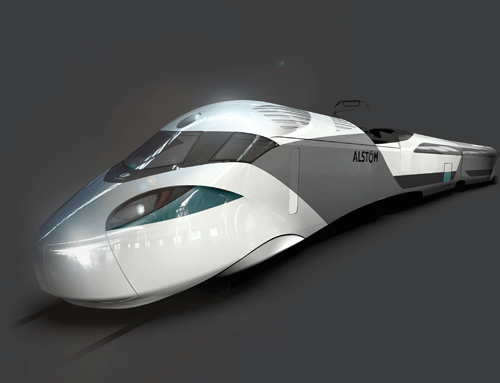
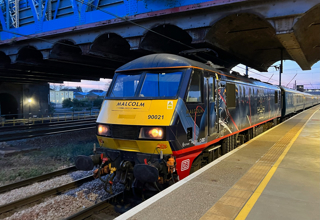
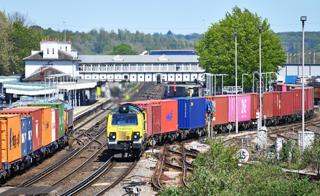
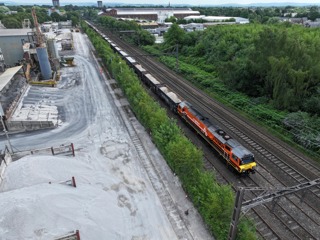
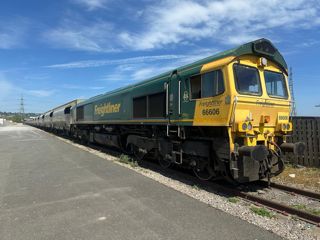
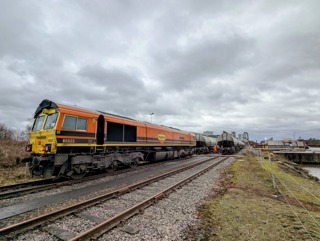










Login to comment
Comments
No comments have been made yet.